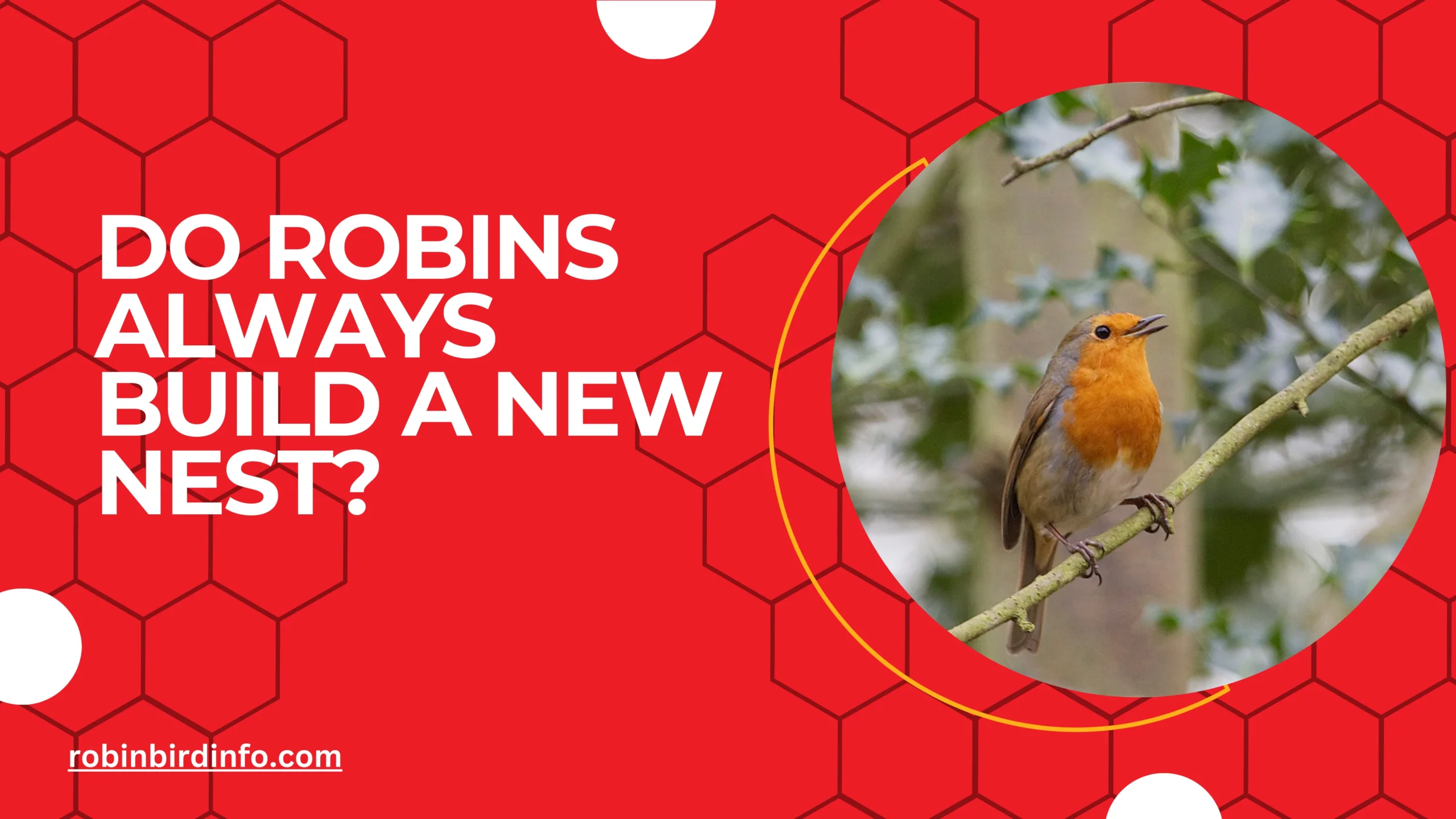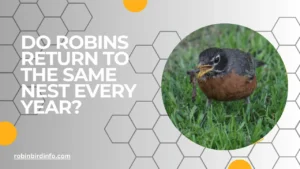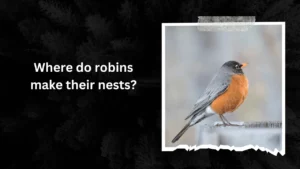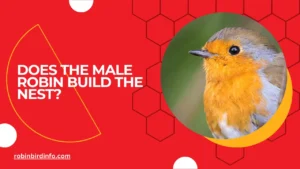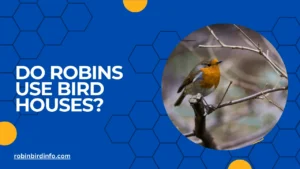Have you ever peeked into a bird’s nest, marveling at its intricate construction of twigs, leaves, and mud?
Perhaps you’ve watched a pair of Robins diligently building one in your backyard tree, weaving a haven for their upcoming brood. But a surprising question arises: do Robins always build a brand new nest each year?
The answer, dear reader, is not as straightforward as you might think. Unlike some human families who cherish heirlooms and traditions, Robins take a more pragmatic approach to nesting. Their decision to revisit an old nest or embark on a fresh building project depends on a fascinating interplay of factors.
By delving into the world of Robin nesting habits, we gain a deeper appreciation for their resourcefulness and the intricate dance they perform with their environment.
So, grab a cup of coffee, settle in, and prepare to explore the fascinating world of Robin nest reuse (or not)!
Contents
Section 1: Nest Building Behavior
Nest Construction: Robins are skilled nest builders. They construct cup-shaped nests using a variety of materials, including twigs, grass, leaves, and mud. The nest is typically lined with softer materials, such as feathers or hair, to provide insulation and comfort for the eggs and young.
Nest Placement: Robins often choose to nest in trees, shrubs, or on buildings. They prefer sheltered locations that are protected from wind, rain, and predators. The height of the nest can vary, but it is usually placed several feet off the ground.
Section 2: Reuse of Old Nests
Advantages of Reusing Nests: Reusing an old nest can save Robins time and energy. It eliminates the need to gather materials and construct a new nest from scratch.
Factors Influencing Nest Reuse: Several factors can influence whether a Robin reuses an old nest, including:
- Condition of the Nest: If the old nest is still intact and in good condition, Robins may choose to reuse it.
- Availability of Materials: If suitable nesting materials are scarce, Robins may be more likely to reuse an old nest.
- Presence of Parasites: If the old nest is infested with parasites, Robins may avoid reusing it.
- Predation Risk: If a nest was previously attacked by predators, Robins may choose to build a new nest in a different location.
Section 3: Building New Nests
Reasons for Building New Nests: Robins may build new nests for several reasons, including:
- Damage to the Old Nest: If the old nest is damaged by weather, predators, or other factors, Robins may need to build a new one.
- Parasite Infestation: If the old nest is infested with parasites, such as mites or lice, Robins may abandon it and build a new one.
- Change in Nesting Preferences: Robins may sometimes change their nesting preferences, such as choosing a different location or building a nest with different materials.
The Nest-Building Process: Building a new nest is a time-consuming process. Robins carefully gather materials, such as twigs, grass, and mud. They then weave these materials together to form a cup-shaped structure. The nest is lined with softer materials, such as feathers or hair, to provide insulation and comfort for the eggs and young.
Section 4: The Role of Nest Site Fidelity
Nest Site Fidelity: Nest site fidelity refers to the tendency of birds to return to the same nesting site year after year. Robins may exhibit some degree of nest site fidelity, but they are not as strongly tied to specific nesting sites as some other bird species.
Factors Affecting Nest Site Fidelity: Several factors can influence nest site fidelity in Robins, including the availability of food, water, and nesting materials, as well as the presence of predators and human disturbance.
Section 5: Conservation Implications
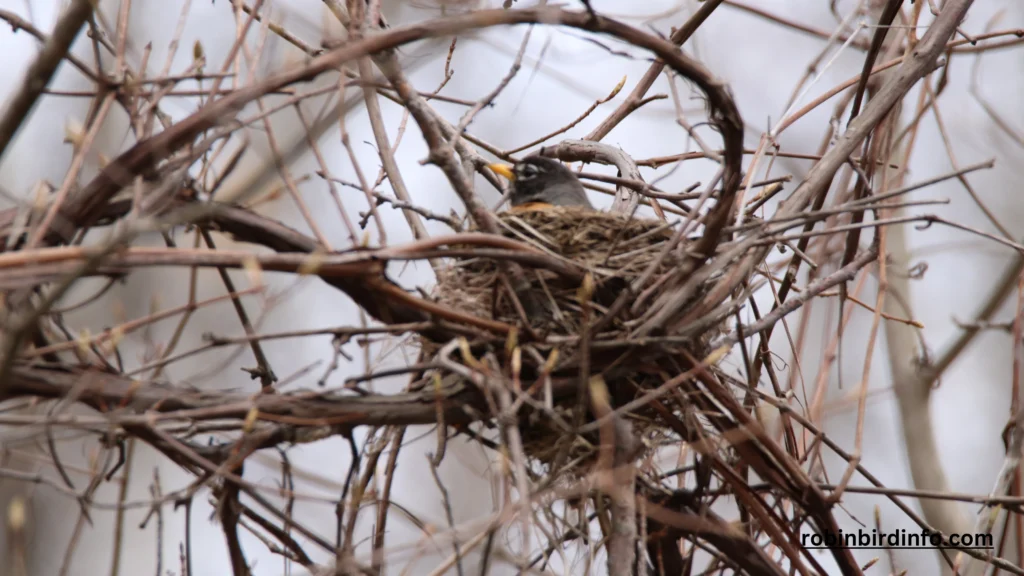
Habitat Conservation: Protecting and restoring natural habitats is crucial for the conservation of Robin populations. By providing suitable nesting and foraging sites, we can help ensure the survival of these beloved birds.
Reducing Human Disturbance: Minimizing human disturbance around nesting sites can help reduce stress on nesting birds and increase their chances of successful breeding.
Citizen Science: Participating in citizen science projects can help researchers monitor Robin populations and track changes in their nesting behavior. By collecting data on nesting success, nest site selection, and other relevant factors, citizen scientists can contribute to conservation efforts.
Conclusion
The decision to reuse or build a new nest is a complex one for Robins, influenced by a variety of factors.
By understanding the factors that influence their nesting behavior, we can appreciate the ingenuity and adaptability of these fascinating birds. By protecting their habitats and minimizing human disturbance, we can help ensure the continued survival of Robin populations for generations to come.
FAQ’s
Do Robins reuse old nests?
Yes, Robins may reuse old nests if they are still in good condition and free of parasites. However, they often build new nests each breeding season.
How long does it take to build a Robin’s nest?
It typically takes a few days for a pair of Robins to build a nest. The exact time can vary depending on factors such as weather conditions and the availability of nesting materials.
Where do Robins typically build their nests?
Robins often build their nests in trees, shrubs, or on buildings. They prefer sheltered locations that are protected from wind, rain, and predators.
What materials do Robins use to build their nests?
Robins use a variety of materials to build their nests, including twigs, grass, leaves, mud, and hair.
How many eggs do Robins typically lay?
Robins typically lay 3-4 eggs per clutch.
How long does it take for Robin eggs to hatch?
It takes about 12-14 days for Robin eggs to hatch.

